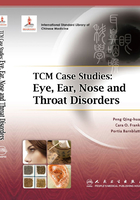
上QQ阅读APP看书,第一时间看更新
Preface
Case-based teaching is a pedagogical teaching method that uses real case histories as active teaching tools for students to learn the definitions or theory of a topic. This method helps students to develop sophisticated diagnostic skills using intense theme-centered interactions with their supervisors through inquiry, dialogue, and seeking answers. It is an open-ended, student-oriented teaching approach that maximizes their learning potential by helping them achieve better critical thinking and real-world problem solving skills. Traditional Chinese Medicine (TCM) is a practical modality and its education system must be responsive to the demands of society and the health care market. Innovative teaching methods are needed to improve the clinical competency of TCM students. By coupling didactic instruction with case histories, students are able to apply their theoretical knowledge of TCM principles, methods, formulas, and medicinals in real world clinical practice settings, thus providing patients with effective treatment based on pattern differentiation.
Case-based teaching is a pragmatic method that needs to be integrated into the pedagogy of TCM clinical courses. This method helps to cultivate analytical thinking and the clinical abilities of students. It represents the future direction of clinical education. TCM Case Studies: Eye, Ear, Nose and Throat Disorders is one volume of the series TCM Case Studies.
This textbook uses real-life cases of TCM Ophthalmology and Otolaryngology and provides detailed analysis throughout the whole process of diagnosis and treatment using TCM pattern differentiation, analytical thinking of prescribing formulas and Chinese medicinals, the progression of the disease, and the patient’s therapeutic responses. It builds bridges between theoretical study and clinical practice, cultivating critical thinking skills of students to diagnose and treat ophthalmic and otolaryngological disorders.
By prioritizing disorders that are widely seen and treated with TCM, this book elaborates on each case of 32 common ophthalmic diseases and 29 common otolaryngological diseases in terms of nine key aspects.
The brief introduction provides an Outline of The Disorder including basic concepts, etiology, pathomechanisms, and classification of pattern differentiation. The Case Summary provides the general background information of the patient, the chief complaint for his/her initial visit, their medical history and symptoms, the current clinical manifestations, as well as findings from the physical examination, special examination, and laboratory examination. Common Clinical Patterns and Formulas outlines the most common patterns that a clinician will encounter in clinical practice with recommended formulas.
The Diagnostic Analysis explains the major features of the case including the cause of disease, signs and symptoms, tongue appearance and pulse qualities. It also explains the progression of the disease, the therapeutic response as well as an assessment of what needs to be improved in the patient’s medical history, along with the physical examination, and inspection. This section also provides guidelines for the analysis of special symptoms and signs, tongue appearance, and pulse condition as well as the patterns and diagnosis that should be considered in accordance with the condition of disease. This then leads to the selection of therapeutic treatment methods and corresponding formulas and medicinals based on pattern differentiation. The Diagnostic Analysis focuses on data collected by the four examinations, analyzes the etiology and pathomechanisms of the case and interprets its manifestations, tongue appearance, and pulse condition to determine the location and nature of disease, ascertain the pattern, and distinguish it from similar patterns.
This process culminates with The Diagnosis, which lists the Chinese medical name for the disease and its pattern type, as well as the Western medical name. Clinical Treatment contains therapeutic principles, specific treatment methods, formula and medicinals and modifications. Also discussed are alternative formulas, analysis of the formula and medicinals, acupuncture point prescription acupuncture and its analysis, and other therapies with TCM modalities.
The Further Consultation summarizes the patient’s progress on the second visit and the corresponding treatment. Study Questions explores questions that are not explicitly discussed in the case analysis and are designed to inspire critical thinking for students. These are offered in as essay questions and as Case Scenarios. Finally, Answers reference answer or key points to the Study Questions are discussed.
The editorial committee of this textbook consists of experts and professors of TCM Ophthalmology and Otolaryngology from TCM University and College of Hunan Beijing, Guangzhou, Shanghai, Chengdu, Nanjing, Jiangxi, Guiyang, Zhejiang, and Guangxi. All of them have long-term clinical experience and most of them are veteran professors who lecture on TCM to undergraduates and international students. During their distinguished careers, they have not only accumulated rich clinical experiences and profound understanding of TCM clinical education for international students, but they also have published textbooks and reference books on TCM Ophthalmology and Otolaryngology. The combined experience of these esteemed practitioners has laid a solid foundation for writing this book.
This book is designed primarily for overseas readers. It aims to provide reallife case studies and references for teachers and students of international TCM, acupuncture colleges, acupuncturists, and biomedical doctors who are interested in TCM and acupuncture. It is also geared to the general reader to familiarize them with the advantages of treating ophthalmic and otolaryngological disorders with TCM.
This book is practical and is highly readability. It took more than two years to complete. During the writing process, there were many group discussions where the book was reviewed and revised. However, despite the authors’ best efforts, this book is still a work on progress. We invite the readers to send their comments, corrections, and suggestions to supplement, amend, and improve when reprinted.
Prof. Peng Qing-hua
Hunan University of Chinese Medicine
October 18, 2013